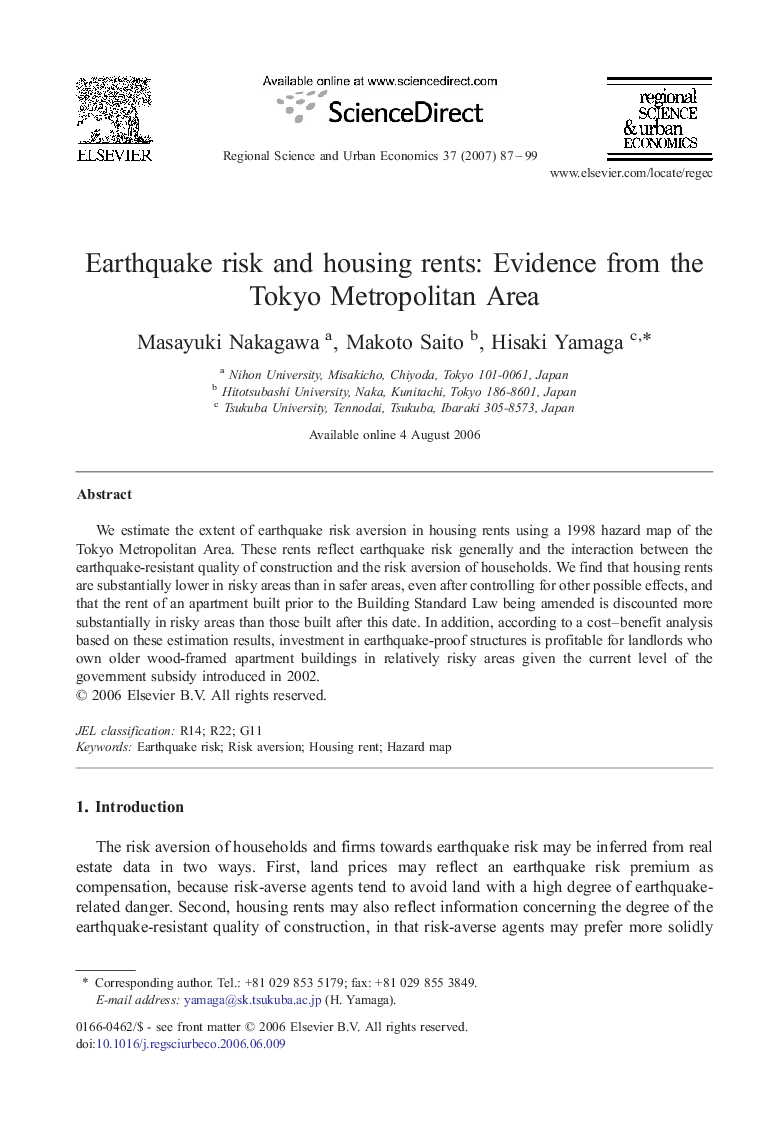| Article ID | Journal | Published Year | Pages | File Type |
|---|---|---|---|---|
| 983953 | Regional Science and Urban Economics | 2007 | 13 Pages |
We estimate the extent of earthquake risk aversion in housing rents using a 1998 hazard map of the Tokyo Metropolitan Area. These rents reflect earthquake risk generally and the interaction between the earthquake-resistant quality of construction and the risk aversion of households. We find that housing rents are substantially lower in risky areas than in safer areas, even after controlling for other possible effects, and that the rent of an apartment built prior to the Building Standard Law being amended is discounted more substantially in risky areas than those built after this date. In addition, according to a cost–benefit analysis based on these estimation results, investment in earthquake-proof structures is profitable for landlords who own older wood-framed apartment buildings in relatively risky areas given the current level of the government subsidy introduced in 2002.
